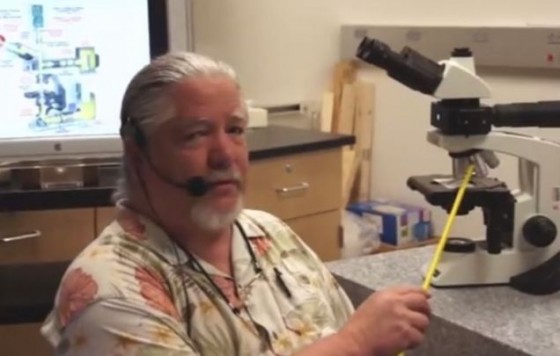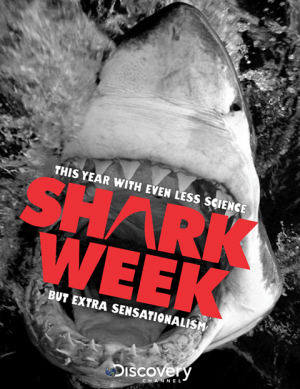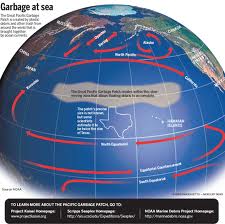Skepticblog
About Donald Prothero

Donald R. Prothero was Professor of Geology at Occidental College in Los Angeles, and Lecturer in Geobiology at the California Institute of Technology in Pasadena. He earned M.A., M.Phil., and Ph.D. degrees in geological sciences from Columbia University in 1982, and a B.A. in geology and biology (highest honors, Phi Beta Kappa) from the University of California, Riverside. He is currently the author, co-author, editor, or co-editor of 28 books and over 250 scientific papers, including five leading geology textbooks and four trade books as well as edited symposium volumes and other technical works. He is on the editorial board of Skeptic magazine, and in the past has served as an associate or technical editor for Geology, Paleobiology and Journal of Paleontology. He is a Fellow of the Geological Society of America, the Paleontological Society, and the Linnaean Society of London, and has also received fellowships from the Guggenheim Foundation and the National Science Foundation. He has served as the President and Vice President of the Pacific Section of SEPM (Society of Sedimentary Geology), and five years as the Program Chair for the Society of Vertebrate Paleontology. In 1991, he received the Schuchert Award of the Paleontological Society for the outstanding paleontologist under the age of 40. He has also been featured on several television documentaries, including episodes of Paleoworld (BBC), Prehistoric Monsters Revealed (History Channel), Entelodon and Hyaenodon (National Geographic Channel) and Walking with Prehistoric Beasts (BBC).
RSS feed for this authorfaculty.oxy.edu/prothero
Subjects
aliens alternative medicine atheism autism belief bigfoot Brian Dunning CAM Carl Sagan climate change conspiracy theories Creation creationism critical thinking cryptozoology denialism dinosaurs Dr. Kiki earthquakes economics education environment ethics evolution fossils geology Ghost Hunting ghosts global warming God homeopathy intelligent design james randi journalism media medicine michael shermer morality nasa paleontology paranormal politics pseudoscience Psychics psychology religion science science denialism scope SETI Shermer skeptical history skepticism skeptoid Skeptologists TV ufo ufos vaccines videoRecent Comments
- Daniel Loxton commented on A Fond Farewell to Skepticblog at 1:25 pm, September 18, 2014
- markx commented on A Fond Farewell to Skepticblog at 8:52 pm, September 17, 2014
- Thomas commented on False Equivalence at 11:44 am, September 15, 2014
- John Greg commented on A Fond Farewell to Skepticblog at 2:10 pm, September 13, 2014
- tmac57 commented on A Fond Farewell to Skepticblog at 10:39 am, September 13, 2014
Read posts by author:
A creationist mole and a sorry mess

CSUN lab technician Mark Armitage, was fired after publishing creationist ideas and preaching creationism in his Biology Department job
A few weeks ago, a story broke in the news about a creationist working in the Biology Department at California State University Northridge (CSUN), who was fired for pushing creationism in the department. The story exploded across the internet, especially among the creationist organizations who are once again claiming persecution by scientists. CSUN apparently botched both the hiring of this guy, and now his dismissal, so they’ve been sued and this is going to play out badly for them in the courts. But the entire case raises larger issues that are not easily resolved.
First, the facts of the case. The plaintiff is Mark H. Armitage, a microscope technician (not a professional biologist). He did some undergrad work in Biology at University of Florida, but didn’t graduate. Then he got his B.S. in Education from Jerry Falwell’s fundamentalist Liberty University, and his M.S. in Biology (parasitology) from the Institute of Creation Research, an unaccredited fundamentalist organization that has since left California and closed down its graduate program. As many others have shown, the ICR “Master’s Degree” was a sham, consisting of little more that incompetently done book reports and quote-mining from legitimate scientific literature with a creationist spin, not legitimate scientific research. I’ve seen a number of “master’s theses” from there—they are so bad they wouldn’t even pass for a freshman book report. Prior to his employment at CSUN, he was employed as a microscope technician at a variety of Christian schools. But he has no Ph.D., no formal training or peer-reviewed published research in the histology he was working on. He’s just a humble lab tech on a 2-day a week part-time gig, with no guarantee of employment from one semester to the next. His sole job is to maintain and keep track of the microscopes in a big department with hundreds of them, not to teach courses or do research. (continue reading…)
comments (28)The great Pacific garbage patch
When I teach Intro to Oceanography this semester and last year, one of the stories that made the greatest impression on my students (and on me, too) was the sad account of the “Great Pacific Garbage Patch.” This is an area of the ocean surface in the North Pacific covering between 700,000 square kilometers (270,000 sq mi) to more than 15,000,000 square kilometers (5,800,000 sq mi), larger than the size of Texas. It is composed nearly entirely of plastic trash, fishing nets, and other floating garbage, at least 80% which comes from the land and is non-biodegradable. The denser areas of garbage are so large they can be seen from satellite views.
Why is so much garbage concentrated in one area? It all has to do with the oceanic currents that I teach my Oceanography students about. The centers of each portion of the ocean is surrounded by a big circular current called a gyre, which usually runs in a clockwise fashion in the Northern Hemisphere and counterclockwise in the Southern Hemisphere (due to the Coriolis effect). In the North Pacific, a huge gyre completely surrounds the center of the northern ocean, with the warm fast Kuroshio Current coming up from the tropics past Japan, and the cold slow California Current coming down the eastern edge from Alaska, connected by currents (North Equatorial, North Pacific) which travel east or west to connect these in the equator and in the polar regions. This spiraling current tends to accumulate a mound of water in the middle (due to the Ekman spiral effect) that is rather stagnant and does not mix or blend with the boundary currents very well. It is also at a latitude with permanent high-pressure over it, so there’s no strong air currents to move it in any particular direction. Consequently, the centers of ocean gyres are slow and stagnant and tend to accumulate stuff that floats into them, and cannot escape. In the North Atlantic, the stagnant center of the gyre is called the “Sargasso Sea” after the huge floating patches of Sargassum seaweed that floats in the region for decades. There are garbage patches of smaller size in most of the other oceanic gyres as well. But in the North Pacific gyre, what stays put is garbage, the largest such patch in the world. (continue reading…)
comments (10)the pot calling the kettle black

In our modern world, we have a strange phenomenon. When polls are conducted about which professions the public considers most trustworthy and useful to society, scientists nearly always come out at or near the top. This poll by the Pew Research Center of 4006 American adults placed them just below the military, doctors, and teachers in terms of trust and their contribution to society. (To no one’s surprise, lawyers were considered the least trustworthy and contributed least to society). This poll by Ipsos of 1018 adults in the UK placed scientists just below doctors and teachers. (Lawyers were not included, so bankers and politicians came out at the bottom in the UK).
Historically, this has long been true. Most people appreciate the huge benefit that science brings to society in terms of the technological advances that make our lives longer and better. And despite the stereotypes, apparently most people still regard scientists as objectively seeking the truth, working hard in their labs, and trying to unravel the secrets of the universe. Unfortunately, the most common stereotypical myth, Hollywood’s “mad scientist out to destroy/ dominate the world” is still pervasive as well. (continue reading…)
comments (43)“Shark week” goes belly up

A year ago, I blogged about the decline of “Shark Week” on Discovery Channel. At that time, the normally documentary-filled week that was the channel’s biggest draw all year was beginning to show signs of “jumping the shark.” As I pointed out in previous posts, the deregulation of the airwaves in the late 1980s has led to a steady “network decay” of once reputable TV channels. When cable TV first expanded into hundreds of speciality channels, they were all dedicated to a core mission, whether it be golf or history or science. As TVTropes.com explains it, all of these deregulated cable networks had to please advertisers, and soon moved into reality shows and sensationalism to attract the core audience of 18-31 year old males that advertisers covet. Discovery Channel used to run almost non-stop documentary footage, and did fine like that for over a decade. As TVTropes.com puts it:
comments (8)The Discovery Channel still shows plenty of actual documentary material, despite having been decaying for almost as long as MTV has. In the late 80s the lineup was mostly serious documentaries, the most famous of which was Wings (no relation to the sitcom except for a focus on aircraft) but which also included classy repackaged BBC imports like Making of a Continent — and once a year there was Shark Week, which was just what you’d expect. By the mid-1990s, they showed an obscene amount of home improvement shows and cooking shows aimed at stay-at-home moms (enough to spawn the spin-off Discovery Home & Leisure Channel, now Planet Green) and Wings had proven so popular it had been farmed out to its own spin-off, Discovery Wings Channel (now Military Channel). Now, they’re being swamped with “guys building and/or blowing things up” shows in the vein of MythBusters and Monster Garage. And about four different shows about ghost hunters. In 2005, Discovery debuted Cash Cab, a game show that takes place in the back of a cab, leaving one unsure whether it even has a theme beyond “non-fiction”. It gets weird when you realize that they’re knocking some of their own shows off, especially Mythbusters into Smash Lab (with a focus on safety measures) and How It’s Made into Some Assembly Required. The latter has almost only done products featured in the former (though How It’s Made has been on for just about ten years, so it’s hard to find something they haven’t done). The Discovery Channel also used to contain a lot of nature, which is where the now-classic Shark Week (which they still air regularly) originated from. But it seems that explosions have taken the place of tigers ripping stuff to pieces. Most of the nature shows have since been relegated to Animal Planet. Amusingly enough, despite the slippage over the years it remains the sole survivor of the educational channels on American cable television.
Bananaman slips again

Followers of the evolution-creation wars in this country have heard about Ray Comfort, a glorified street preacher with limited education (he has no college degree) from New Zealand who runs a ministry out of Bellflower, California, called the “Living Waters.” In his appearance, he reminds me of Sonny Bono, except he’s not as smart. He is very prominent on the internet, with dozens of videos (especially his “Way of the Master” series) pushing his theology, and especially attacking evolution. His publicity and high visibility have sold lots of his books (most of which are short titles cobbled together by reprinting stuff from the public domain). Together with washed-up actor Kirk Cameron, they have been constant gadflies preaching against science and evolution, and doing anything possible to generate publicity and sales, especially challenging evolutionists to pointless debates.
I first saw Comfort in action when he and some of his minions came to stalk the huge crowds gathered to hear Richard Dawkins speak at Caltech for a Skeptic Society event. They mingled about, trying to preach creationism, and handing out their little paperback versions of Darwin’s “On the Origin of Species.” However, this book is no true work of Darwin. Comfort has deliberately edited the text to make it sound favorable to creationism, and added a long introduction that is one debunked creationist trope after another. Keeping with his habit of stalking scientists and secularists, I next saw him at a freethought convention in Orange County, where he snuck in without paying for the conference, and tried to interview some of the speakers. He baited P.Z. Myers into an interview, and P.Z. willingly talked to him, not caring that Comfort would selectively edit the interview to make it sound like P.Z. doubted evolution. Unlike the other big fundamentalist creationist ministers who focus on their own flock, Comfort’s approach is as a stalker and gadfly. His mission is to gather video footage that he can take back to his editing room and webmaster, and edit it down to create a “gotcha” moment and make secularists look foolish. (continue reading…)
comments (46)“Chemtrails”? Really? Did you flunk science?

For the past few years, my Facebook page kept flagging strange websites that claimed that ordinary contrails formed by high-flying aircraft are “chemtrails,” a special kind of chemical sprayed on the unwitting population for reasons too bizarre and illogical to take seriously. For a long time, I’ve ignored this garbage on the internet, but in recent years it has gotten more and more pervasive, and I’ve run into people who believe it. There are whole shows about it on the once-scientific Discovery Channel, and the History Channel as well. Now the chemtrail community circulates their photos and videos among themselves, put hundreds of these videos on YouTube, and on their own sites and forums. But the way the internet works as a giant echo chamber for weird ideas with no peer review, fact checking, or quality control, it’s getting impossible to ignore them any more, and it’s time to debunk it.
The first few times I heard about “chemtrails”, my reaction was “You can’t be serious.” But the people who spread this are serious. They are generally people who have already accepted the conspiracy theory mindset, where everything that they don’t like or don’t understand is immediate proof of some big government conspiracy. But there’s an even bigger factor at work here: gross science illiteracy. The first thing that pops in my mind reading their strange ideas is “Didn’t this person learn any science in school?” And the fastest rebuttal I give when I run into one of these nuts is: “Do you even understand the first thing about our atmosphere? Anything released at 30,000 feet will blow for miles away from where you see it, and has virtually no chance of settling straight down onto the people below, and be so diluted it would have no measurable amount of the chemical by the time it lands. That’s why crop-dusting planes must fly barely 30 feet off the ground so their dust won’t blow too far away from the crops!” (continue reading…)
comments (34)Smarter than thou?
In a previous post, I commented on how the Religious Right got upset when “Cosmos” aired last spring. They were angry when “Cosmos” mentioned Giordano Bruno or scientists who were persecuted by religious extremists during their pursuit of truth. They recoiled in horror at how often “Cosmos” reminded us of our cosmic insignificance compared to the scale of the universe, or from the perspective of geologic time. They raged about the fact that “Cosmos” spent an entire episode on on evolution, and the topic of evolution came up repeatedly. And lots of pro-business types hated the episode about Clair Patterson’s lonely fight against the lead manufacturers, who were invisibly polluting the world and poisoning us all. The climate deniers hated that “Cosmos” mentioned anthropogenic global warming many times.
Nonetheless, most of the reviews for “Cosmos” were overwhelmingly positive and there’s good reason to think that it reached much of its target audience, and inspired a lot of people to think about scientific questions in a way that hasn’t happened since the original Sagan version of “Cosmos.” I have been rejoicing at the recent resurgence in the media popularity of science and evolution lately, especially after Bill Nye’s defeat of Ken Ham, the great response to Neil Shubin’s PBS documentary “Your Inner Fish,” and of course, the huge popularity of Neil DeGrasse Tyson and “Cosmos”. Finally, we have several major scientists (Nye, Tyson, Shubin) who are popular in the media, especially on trendy shows like “The Daily Show” and “Colbert Report” as well as national news networks like MSNBC and CNN. They are national celebrities for all the right reasons (smart, articulate, telling people the truth about science and the world), rather than being famous because of reality TV or sports or entertainment. They are becoming widely known, and doing a great job of promoting science against the tidal wave of junk science and pseudoscience in the media. There hasn’t been such high-profile popularity of scientists since the days of Sagan himself. It’s about time! (continue reading…)
comments (32)TAM 2014: the mind of the science denier
It’s been just over a week since I returned, exhausted but inspired and excited, from The Amaz!ng Meeting 2014 in the South Point Hotel south of Las Vegas. The meeting was a great success, with nearly 1200 attendees, and an excellent slate of speakers including Bill Nye the Science Guy (who talked about his debate with Ken Ham and gave me a nice shout-out for helping him), Genie Scott, Daniel Dennett, Michael Shermer, and many others. This year, the theme was “Skepticism and the Brain,” so the speakers including a lot of the leading lights of psychology and neurophysiology, including Elizabeth Loftus (who has shown that human memory is highly unreliable, and usually false), Robert Kurzban (talking about the modular mind), Carol Tavris (talking about cognitive dissonance), and many others. My friend and co-author Daniel Loxton gave an amazing talk about skepticism and why it’s important (it got rave reviews and a standing ovation). Many of the participants thought that this was one of the best TAMs ever, because it largely stuck to a consistent theme, rather than giving a scattershot slate of speakers on widely divergent topics. Plus there were the usual wild evening activities, including another installment of Penn Jillette’s inimitable Rock’n’Roll, Doughnut and Bacon party. (continue reading…)
comments (13)Bigfoot and Yeti DNA: results are in
For years now, we’ve been hearing about Bigfoot believer Melba Ketchum and her supposed results on “Bigfoot DNA”. As reported elsewhere, the results were a bust: the analysis was done incompetently, her reasoning was full of holes and bad science, and she failed to account for a lot of organisms in her sample (such as the American opossum) that explained her “unknowns” that she was calling “Bigfoot.” Not only that, but her paper failed peer review, so she self-published it in a journal she secretly owned, so she gets money every time someone forks up $40 to go past the paywall and read it. Most competent DNA labs are busy with real science, and don’t have the time or money to waste on side trips into pseudoscience, which their grants are not paying for. (continue reading…)
comments (9)Hosted by Skeptic magazine. For website-related matters, contact the webmaster.




Order the book from Shop Skeptic
In recent months, we’ve heard a number of prominent people (from Michael Shermer to Neil DeGrasse Tyson) say that there’s no real difference between the political parties when it comes to science denial. According to this argument, there is bad thinking and “woo” on both sides of the political spectrum. To counteract the fact that science deniers like creationists and climate deniers are overwhelmingly Republican, they point to other types of “woo” like anti-vaxxers, anti-GMOs, anti-frackers, and the like, and claim that these are largely found on the left wing. It turns out, however, that contrary to myth, anti-vaxxers tend to be more right-wing than left-wing (especially among the people who fear government, the large religious crowd that rejects modern medicine, and the home schoolers who don’t want to let their kids be vaccinated).
For example, in his 2012 book The Republican Brain: The Science of Why they Deny Science—And Reality, Chris Mooney admits that not all examples of science denial are on the right wing. There are certain ideas, such as the fears of nuclear power, or of scary oil company practices like fracking, that are predominately held by liberals and environmentalists. But there are important differences here. Adherence to pseudoscience and anti-science is not symmetrically distributed between the left and the right. Ideas such as anti-vaxx, anti-nukes, and anti-fracking are not held uniformly by the majority of liberals or progressives, but only a tiny subset, whereas studies show that the ideas of creationism and global climate change denial are virtually universal among American conservatives now. (continue reading…)
comments (15)